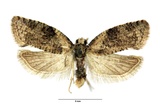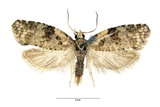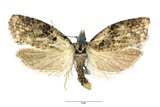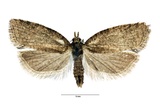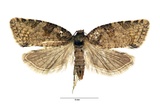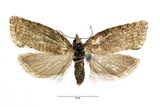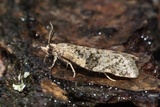Capua vulgana (Frölich, 1828) Species
Last modified: Nov. 21, 2025, 7:41 p.m.
A not so common species throughout Belgium.
Details
- Classification
- Family: Tortricidae > Subfamily: Tortricinae > Tribus: Ramapesiini > Genus: Capua > Species: Capua vulgana
- Vernacular names
- Meibladroller (NL), Common Tortrix (EN), Maiwickler (DE)
- Synonyms
- Capua favillaceana (Hübner, 1817), nec (Hübner, 1799) and Capua terreana (Treitschke, 1835)
- First mention in Belgium
- De Fré Ch. 1858. Catalogue des Microlépidoptères de la Belgique. — Annales de la Société entomologique belge 2: 45–162. On page 79.
- Status
-
Native
Distribution
Imago
Sexes moderately dimorphic. Wingspan male 13–16 mm, forewing with a conspicuous costal fold extending from near base to middle. Antenna serrate – ciliate. Male specimens often with labial palpi, head and basal area of the wing pale creamy, contrasting with rest of the wing.
Wingspan female 17-19 mm, antenna simple. Forewing yellowish brown, variable suffused greyish with ill-defined darker markings. Female forewing comparatively uniform yellow-brownish, resembling poorly marked Cnephasia species but ground colour grey-brown instead of grey.
Caterpillar
Head yellowish, prothoracic plate light brown. Abdomen greyish green, heavily grained due to the presence of microscopic small brown spines.
Bionomics
The larva lives between spun leaves of the host plant and overwinters as larva or pupa.
Males fly about trees in woods or over Vaccinium in open countries. Both sexes fly close to the ground at dusk, and later come to light.
Flight periods
The adults have been observed from early May untill mid-July with a peak in late May and early June.
Observed on
- Host plant (species):
- Carpinus betulus, Alnus glutinosa and Corylus avellana
- Host plant (genera):
- Quercus, Vaccinium, Rubus and Sorbus
The larva feeds on the leaves of Carpinus betulus, Alnus glutinosa, Rubus, Sorbus, Quercus and Vaccinium spp., probably also on other plants.
